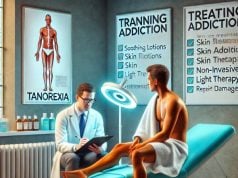
It starts with a capful of salty liquid dubbed “G” at a rave or a fitness-recovery sip before bed. Minutes later, muscles soften, worries dissolve, and a euphoric warmth rolls through the body. Gamma-Hydroxybutyrate—better known as GHB—can feel like a tailor-made tranquilliser that doubles as a party buzz. But the same compound that induces dream-like calm can also set a brutal trap: tolerance builds within days, withdrawal can trigger life-threatening delirium, and micro-dose errors lead to coma. This guide unpacks how recreational or therapeutic use slides into dependence, the danger signals every user and clinician should recognise, and the multi-layered strategies that bring people safely back to baseline.
Table of Contents
- Scope of Use and Current Trends
- Mechanisms and Vulnerability Factors
- Recognising Dependence: Warning Signs and Assessment
- Physical, Neuropsychological, and Social Consequences
- Evidence-Informed Treatment and Sustainable Recovery
- Frequently Asked Questions
Scope of Use and Current Trends
From anaesthetic to nightlife staple
Synthesised in the 1960s as an anaesthetic adjunct, GHB resurfaced in the 1990s club scene for its “liquid ecstasy” reputation—euphoria without the stimulatory grind. Therapeutically, its sodium-salt form (sodium oxybate) treats narcolepsy, while illicit home-brew batches, known as GBL/1,4-BD conversions, dominate street supply today.
Prevalence snapshots
- Europe: Surveys estimate 1–2 % lifetime use among young adults, with hotspots in the Netherlands, Spain, and the UK.
- North America: Club and LGBTQ+ communities report 3–5 % past-year use; campus experimentation is rising due to social-media “sleep-hack” trends.
- Australia & NZ: Imports of industrial-solvent precursor GBL increased 60 % from 2022 to 2024.
Potency pitfalls
Illicit solutions vary from 0.5 g/ml to 2 g/ml. A misjudged sip easily doubles an intoxicating dose, causing respiratory depression. Regular users titrate to avoid “G-sleep” during the day, leading to round-the-clock micro-dosing—a fast track to addiction.
Mechanisms and Vulnerability Factors
Neurochemical actions
- GABA-B agonism: GHB binds to GABA-B receptors, dampening neuronal firing and producing sedation.
- Dopamine rebound: Initial inhibition is followed by a surge, explaining euphoria and reinforcing redosing.
- Rapid pharmacokinetics: Half-life ≈ 30 minutes; users re-dose every 1–3 hours to maintain effects, solidifying habit loops.
Risk-enhancing profiles
| Dimension | Influence | Protective Move |
|---|---|---|
| High novelty-seeking | Chases chemical variety at parties | Rotate to non-drug thrill activities (rock-climbing, dance classes) |
| Insomnia or chronic pain | Self-medicates sleep and muscle tension | CBT-I, physiotherapy, melatonin routines |
| Disordered body image | “G for lean look”: appetite suppression | Evidence-based nutrition coaching, body-neutral counselling |
| Poly-substance culture | GHB mixed with stimulants (“G-speedball”) | Party planning with sober sitter, single-substance agreements |
Social and supply factors
- Cheap precursors (paint-stripper GBL) available online.
- Measuring caps replaced by sip-from-bottle culture at afterparties.
- Misbelief that “it’s just a sleep aid; heroin is worse.”
- Lack of standard testing at festivals compared with MDMA strips.
Recognising Dependence: Warning Signs and Assessment
Behavioural flags
- Three-hour rule life: Carrying a flask to avoid withdrawal tremors.
- Stacking doses: Night “sleep shot” plus dawn “function shot” before work or gym.
- Amnesia slices: Waking with no recall beyond a 15-minute memory window.
- Failed cutbacks: Intention to use weekends only—collapses by mid-week.
- Secret shipments: Ordering drum solvents to kitchen or workshop addresses.
Withdrawal profile (can begin < 90 min post-dose)
- Stage 1 (2–6 h): Anxiety, tachycardia, sweating, mild tremor.
- Stage 2 (6–12 h): Severe tremor, hypertension, hallucinations (visual or tactile), agitation.
- Stage 3 (12–72 h): Delirium, seizures, rhabdomyolysis risk—medical emergency comparable to alcohol or benzodiazepine withdrawal.
Assessment tools
- GHB/GBL Dependence Scale (GDS)—screens frequency, dose pattern, withdrawal history.
- Clinical Institute Withdrawal Assessment – GHB (CIWA-G)—monitors acute detox symptoms.
- Collateral reports: Partners’ observations of dosing rituals, blackouts, or personality changes.
- Lab markers: Elevated CK, metabolic acidosis, unexplained hypokalaemia hint chronic use.
Physical, Neuropsychological, and Social Consequences
Somatic harm
- Respiratory depression & aspiration pneumonia during “G-out.”
- Electrolyte imbalances: Sodium or potassium shifts cause arrhythmias.
- Muscle breakdown: Prolonged coma can lead to pressure necrosis.
- GI distress: Nausea, vomiting, unpredictable onset despite tolerance.
Cognitive & emotional fallout
| Domain | Manifestations |
|---|---|
| Memory | Short-term recall gaps, executive-function sluggishness |
| Mood | Rebound anxiety, anhedonia, depressive episodes |
| Sexual risk | Disinhibition, consent ambiguity in chemsex circles |
| Decision-making | Dangerous driving or workplace errors after micro-dosing |
Relationship & legal repercussions
- Strained partnerships—round-the-clock dosing prevents shared schedules.
- Job loss due to micro-sleep at desk or positive workplace drug screens.
- Legal charges from precursor importation or intoxicated assault events.
Evidence-Informed Treatment and Sustainable Recovery
1. Acute detox (hospital or specialised clinic)
- High-dose benzodiazepine protocol: Diazepam 10–20 mg every 1–2 h titrated to symptom control.
- Adjunct barbiturates: Phenobarbital for refractory delirium.
- ICU monitoring: Continuous vitals, electrolyte correction, seizure precautions.
- Thiamine & IV fluids: Prevent Wernicke’s encephalopathy, address rhabdomyolysis.
2. Post-stabilisation pharmacotherapies
| Agent | Purpose | Evidence Note |
|---|---|---|
| Baclofen | GABA-B agonist to reduce cravings | Promising small trials—monitor sedation |
| Gabapentin | Anxiety, sleep normalisation | Helpful for protracted withdrawal |
| Antidepressants (SSRIs) | Treat comorbid depression/anxiety | Start after detox to avoid serotonin synergy |
3. Psychosocial interventions
- CBT-SB (substance & behaviour): Identifies cue-response links—music festivals, gym mirror checks.
- Contingency management: Voucher rewards for negative urine screens.
- Motivational Interviewing: Addresses ambivalence—“G keeps me shredded vs. costs my job.”
- Trauma-informed therapy: Many users self-medicate past sexual assault or PTSD.
4. Harm-reduction for ambivalent users
- Measured micro-pipettes instead of beverage caps.
- Buddy dosing & recovery position protocols at parties.
- No mixing rules—avoid concurrent alcohol or benzos.
- 24-h helplines & test services for GBL purity (where legal).
5. Building a relapse-resilient life
| Pillar | Action Steps |
|---|---|
| Sleep hygiene | Melatonin, blue-light curfew, CBT-I sessions |
| Stress toolkit | Breath-work, cold showers, resistance training (endorphin source) |
| Nutrition | Balanced macros to counter GHB appetite suppression rebound |
| Community | SMART Recovery, Narcotics Anonymous, or LGBTQ+ chemsex-specific groups |
| Accountability tech | Banking blocks on solvent suppliers, drug-testing schedules |
6. Long-term monitoring
- Quarterly liver and renal panels.
- Cognitive testing for memory recovery.
- Psychosexual counselling if chemsex played a role.
- Gradual benzodiazepine taper (if used) to prevent substitute addiction.
Recovery metrics: extended abstinence, restored circadian rhythm, stable employment or study, and self-reported quality-of-life gains.
Frequently Asked Questions
Can someone taper GHB at home?
Home tapers are risky. Even small dose errors can trigger severe withdrawal or overdose. Medically supervised detox is strongly recommended.
How fast does tolerance develop?
Daily users often double their dose within one week. Some need hourly sips within a month, risking continuous intoxication.
Is pharmaceutical sodium oxybate addictive?
Yes, dependence can occur if dosing exceeds prescriptions or schedules are altered. However, medical monitoring reduces risk significantly.
What helps with lingering insomnia after detox?
Sleep hygiene, CBT-I, magnesium glycinate, and short-term melatonin are first-line. Avoid sedative prescriptions that may cross-depend with GABA pathways.
Are there GHB test strips like fentanyl kits?
Limited availability. Some European harm-reduction groups offer reagent drops but accuracy varies. Always assume unknown street solutions are potent.
Does exercise speed up recovery?
Moderate resistance and cardio improve mood and sleep, but avoid over-training early; dehydration and electrolyte loss can mirror withdrawal symptoms.
This article is for educational purposes only and does not replace professional medical advice. If you or someone you know struggles with GHB dependence, seek immediate help from qualified healthcare providers.
Think someone else could benefit? Share this guide on Facebook, repost on X, or forward it privately. Your support helps us keep producing practical, compassionate content—thank you!










